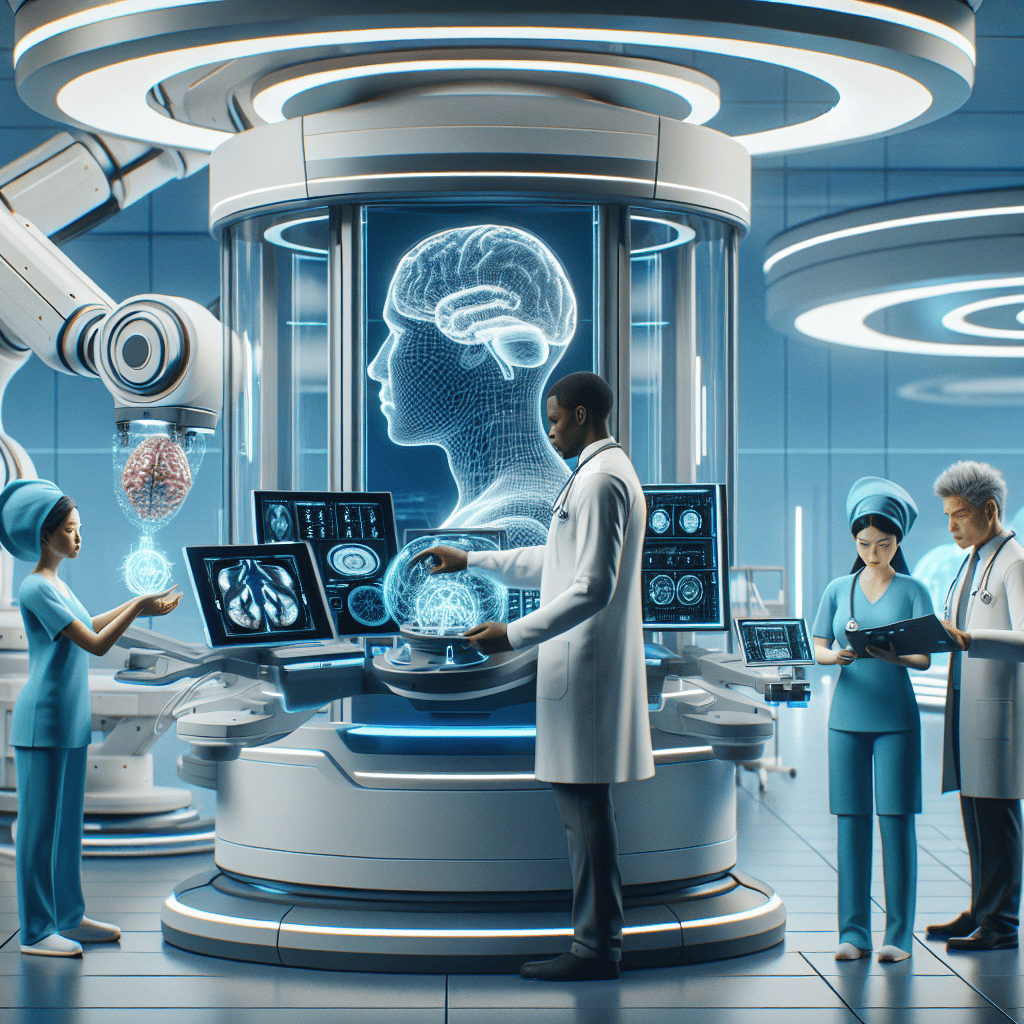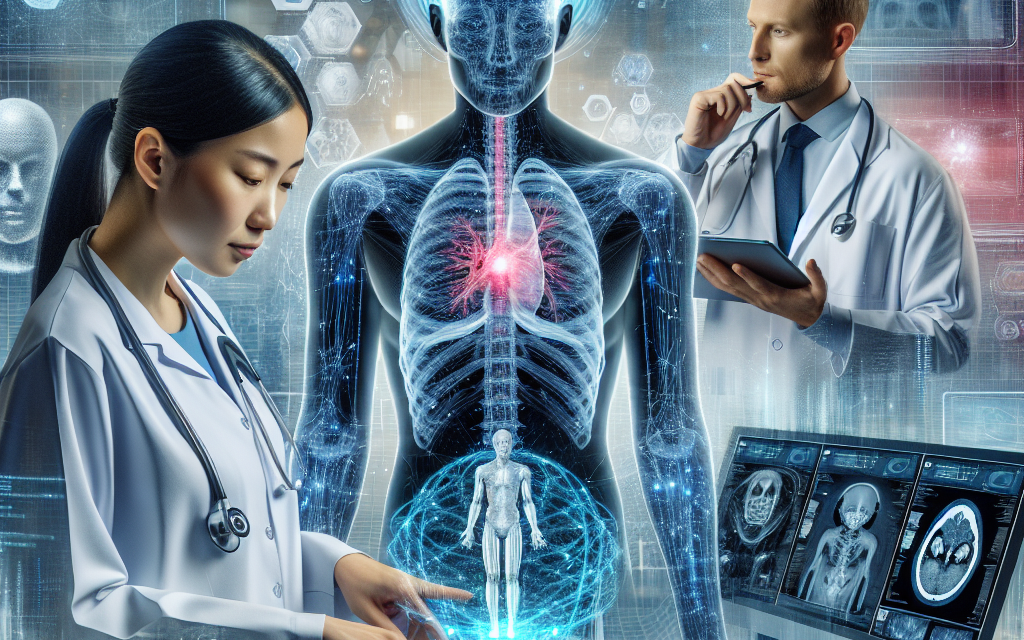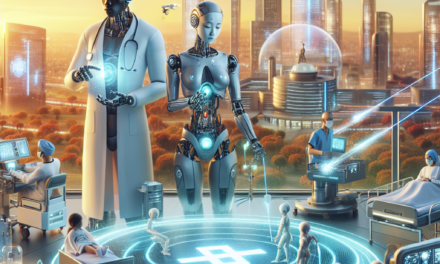The Role of Artificial Intelligence in Early Detection of Diseases
Artificial intelligence (AI) has been making waves in various industries, from finance to transportation. But one area where it has shown immense potential is in healthcare, particularly in the early detection of diseases. With the ability to analyze vast amounts of data and identify patterns that may not be visible to the human eye, AI has the potential to revolutionize diagnostic procedures and improve patient outcomes.
Early detection of diseases is crucial in providing timely and effective treatment. It can mean the difference between life and death, especially in cases of serious illnesses like cancer. However, traditional diagnostic methods can be time-consuming, expensive, and prone to human error. This is where AI comes in, with its ability to process and analyze data at a much faster rate and with greater accuracy.
One of the key roles of AI in early disease detection is in medical imaging. Medical imaging techniques, such as X-rays, MRIs, and CT scans, produce vast amounts of data that can be overwhelming for a human radiologist to analyze. This is where AI-powered algorithms can assist by quickly analyzing the images and highlighting any abnormalities that may require further investigation. This not only saves time but also reduces the chances of human error.
In addition to medical imaging, AI can also play a crucial role in analyzing patient data, such as medical history, lab results, and genetic information. By analyzing this data, AI algorithms can identify patterns and risk factors that may indicate the presence of a disease. This can help healthcare professionals make more accurate diagnoses and develop personalized treatment plans for patients.
One example of AI’s potential in early disease detection is in the field of oncology. Cancer is a complex disease, and early detection is crucial for successful treatment. AI-powered algorithms can analyze patient data and identify patterns that may indicate the presence of cancer. This can help doctors make more accurate diagnoses and develop personalized treatment plans for patients. In fact, a recent study found that AI was able to detect breast cancer in mammograms with a higher accuracy rate than human radiologists.
Another area where AI is making a significant impact is in the early detection of Alzheimer’s disease. This neurodegenerative disease is difficult to diagnose, and by the time symptoms become apparent, the disease has already progressed significantly. However, AI algorithms can analyze brain scans and identify subtle changes that may indicate the presence of Alzheimer’s disease. This can help doctors make an early diagnosis and start treatment before the disease progresses.
Apart from improving diagnostic accuracy, AI can also help in predicting the likelihood of developing certain diseases. By analyzing patient data, AI algorithms can identify risk factors and predict the probability of developing a particular disease. This can help individuals take preventive measures and make lifestyle changes to reduce their risk of developing a disease.
However, as with any new technology, there are challenges that need to be addressed before AI can be fully integrated into diagnostic procedures. One of the main concerns is the potential for bias in AI algorithms. If the data used to train the algorithms is biased, it can lead to inaccurate results and perpetuate existing healthcare disparities. Therefore, it is crucial to ensure that AI algorithms are trained on diverse and unbiased data.
In conclusion, the role of AI in early disease detection is rapidly evolving and has the potential to transform healthcare. By analyzing vast amounts of data and identifying patterns that may not be visible to the human eye, AI can assist healthcare professionals in making more accurate diagnoses and developing personalized treatment plans. However, it is essential to address any potential biases and ensure that AI is used ethically and responsibly in healthcare. With continued research and development, AI has the potential to save countless lives by detecting diseases at an early stage and improving patient outcomes.
How AI is Revolutionizing Medical Imaging and Diagnosis

Artificial intelligence (AI) has been making waves in various industries, and the field of medicine is no exception. With its ability to analyze vast amounts of data and make accurate predictions, AI has the potential to revolutionize medical imaging and diagnosis. In this article, we will explore how AI is being integrated into diagnostic procedures and the impact it is having on the healthcare industry.
One of the most significant ways AI is transforming diagnostic procedures is through medical imaging. Traditional imaging techniques, such as X-rays and MRIs, rely on human interpretation, which can be subjective and prone to error. However, with AI, medical images can be analyzed and interpreted with a higher level of accuracy and efficiency.
AI-powered medical imaging systems use deep learning algorithms to analyze images and identify abnormalities that may be missed by the human eye. These algorithms are trained on vast databases of medical images, allowing them to recognize patterns and make accurate diagnoses. This not only saves time but also reduces the chances of misdiagnosis, leading to better patient outcomes.
Moreover, AI can also assist in the early detection of diseases. For instance, in the case of breast cancer, AI can analyze mammograms and identify subtle changes in breast tissue that may indicate the presence of cancer. This early detection can significantly improve the chances of successful treatment and save lives.
Another area where AI is making a significant impact is in the field of pathology. Pathologists play a crucial role in diagnosing diseases by examining tissue samples under a microscope. However, this process can be time-consuming and prone to human error. With AI, pathologists can now use digital pathology systems that can scan and analyze tissue samples with greater accuracy and speed.
These systems use machine learning algorithms to identify abnormal cells and patterns, allowing pathologists to make more accurate diagnoses. This not only saves time but also reduces the chances of misdiagnosis, which can have serious consequences for patients.
In addition to improving diagnostic accuracy, AI is also helping to streamline the diagnostic process. With the use of AI-powered chatbots, patients can now input their symptoms and receive a preliminary diagnosis without having to visit a doctor. This not only saves time and money but also allows patients to seek medical attention promptly if needed.
Moreover, AI can also assist doctors in making treatment decisions. By analyzing a patient’s medical history, lab results, and other data, AI can provide doctors with personalized treatment recommendations. This not only improves patient outcomes but also reduces the risk of adverse reactions to medications.
Furthermore, AI is also being used to predict the likelihood of certain diseases and conditions. By analyzing a patient’s genetic data, lifestyle factors, and medical history, AI can identify individuals who may be at a higher risk of developing certain diseases. This allows doctors to take preventive measures and provide personalized care to these patients.
However, as with any new technology, there are concerns about the ethical implications of using AI in healthcare. One of the main concerns is the potential for AI to replace human doctors. While AI can assist in making diagnoses and treatment decisions, it cannot replace the human touch and empathy that is essential in patient care.
Moreover, there are concerns about the security and privacy of patient data. With the use of AI, vast amounts of sensitive patient data are being collected and analyzed. It is crucial for healthcare organizations to have strict protocols in place to protect this data and ensure patient confidentiality.
In conclusion, AI is revolutionizing medical imaging and diagnosis in numerous ways. From improving diagnostic accuracy and efficiency to assisting in treatment decisions and predicting diseases, AI has the potential to transform the healthcare industry. However, it is essential to address the ethical concerns and ensure that AI is used responsibly to benefit both patients and healthcare professionals. With continued advancements in AI technology, we can expect to see even more significant improvements in diagnostic procedures and patient care in the future.
Challenges and Opportunities in Implementing AI in Diagnostic Procedures
The use of artificial intelligence (AI) in healthcare has been gaining momentum in recent years, with the potential to revolutionize diagnostic procedures. AI has the ability to analyze vast amounts of data and identify patterns that may not be easily detectable by human physicians. This has the potential to improve accuracy and efficiency in diagnosing various medical conditions. However, the integration of AI in diagnostic procedures also presents its own set of challenges and opportunities.
One of the main challenges in implementing AI in diagnostic procedures is the lack of standardized data. AI algorithms require large amounts of data to be trained and validated, but the data available in healthcare systems is often fragmented and inconsistent. This can lead to biased or inaccurate results, which can have serious consequences for patients. To address this challenge, there is a need for collaboration between healthcare providers, researchers, and technology companies to develop standardized data sets that can be used to train AI algorithms.
Another challenge is the resistance from healthcare professionals towards adopting AI in diagnostic procedures. Many physicians may feel threatened by the idea of machines taking over their role in diagnosing patients. This fear is understandable, as the use of AI may lead to a decrease in the demand for human physicians. However, it is important to note that AI is not meant to replace human physicians, but rather to assist them in making more accurate and timely diagnoses. It is crucial for healthcare professionals to understand the potential benefits of AI and be open to incorporating it into their practice.
On the other hand, the integration of AI in diagnostic procedures also presents numerous opportunities. One of the most significant opportunities is the potential to improve diagnostic accuracy. Studies have shown that AI algorithms can outperform human physicians in diagnosing certain medical conditions, such as skin cancer and heart disease. This can lead to earlier detection and treatment, ultimately improving patient outcomes.
Moreover, AI can also help reduce the workload of healthcare professionals. With the increasing demand for healthcare services, physicians are often overburdened with a large number of patients. This can lead to burnout and affect the quality of care provided. By automating certain aspects of diagnostic procedures, AI can help alleviate the workload of physicians, allowing them to focus on more complex cases and spend more time with their patients.
Another opportunity is the potential cost savings associated with the use of AI in diagnostic procedures. With the rising costs of healthcare, there is a need for more efficient and cost-effective methods of diagnosis. AI has the potential to reduce the need for expensive diagnostic tests and procedures, leading to significant cost savings for both patients and healthcare systems.
In addition, the integration of AI in diagnostic procedures can also lead to advancements in medical research. By analyzing large amounts of data, AI can identify patterns and correlations that may not be apparent to human researchers. This can lead to new insights and discoveries in the field of medicine, ultimately improving patient care.
In conclusion, the integration of AI in diagnostic procedures presents both challenges and opportunities. While there are concerns about data standardization and resistance from healthcare professionals, the potential benefits of AI in improving diagnostic accuracy, reducing workload, and cost savings cannot be ignored. It is crucial for healthcare systems to address these challenges and embrace the opportunities presented by AI to improve patient outcomes and advance the field of medicine.



